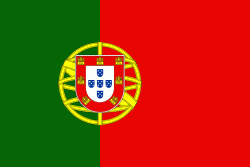Vila do Porto (Vila do Porto)
 |
 |
Santa Maria was the first island in the archipelago to be discovered by Diogo Silves in 1427. By 2 July 1439, a royal charter from Infante D. Pedro, regent of D. Afonso V, referred to the fact that Prince Henry the Navigator had ordered that sheep be set ashore along the seven islands of the Azores (since Corvo and Flores had, at the time, not been discovered). São Miguel and Santa Maria were the first islands to be settled by families from Estremadura, Alto Alentejo and Algarve, facilitated by Gonçalo Velho, then first donatary-captain of the Azores. Gonçalo Velho Cabral, nobleman in the House of the Infante D. Henrique (Henry the Navigator) and commander in the Order of Christ, arrived on the island of Santa Maria in 1432. In the cartography of the 14th Century, the island was referred to as Ilha dos Lobos (Island of Wolves, referring to the wolf seals that lived in the region at the time). It became the seat of the first Captaincy of the Azores, which initially included both Santa Maria and São Miguel.
Its first settlement originated in 1439, with the occupation of Praia dos Lobos (and eventually became the northern coastal village of Anjos). Around 1450, was the probably foundation of the settlement of Porto, by Fernão de Quental. Quental's colony was established along the south coast along an escarpment overlooking a small bay that afforded protection for ships: what would become known as the Vila do Porto (town of the port). This town would become incorporated in 1470, when the town of Porto received the obligatory and first foral (charter), in addition to the establishment of the first lighthouse in the Azores. Although never experiencing earthquakes since its initial settlement (in comparison to the other islands in the Azores), the community was always marked by isolation, inaccessibility and weak defensive position.
It was, by the beginning of the 17th century, the fortification of São Brás along the cliff-tops of Cimo da Rocha, was constructed, near the hermitage dedicated to Our Lady of the Conception.
In 1901, it received an official visit from King Carlos I of Portugal and Queen Amélie, and later that year elected the first Republican municipal government.
Between 1942 and 1944, in the context of the Second World War, the airport was constructed to provide support and emergency facilities for the island. This airport was transferred to the Portuguese Air Force in 1946, and the barrio (Bairro do Aeroporto) was begun by architect Keil do Amaral.
On 21 October 1992, the historical centre was protected, a zone delimited by Vila do Porto, under Regional Legislative Decree 22/92/A. By 24 August 2004, a new document was published by the regional legislature (Decree 29/2004/A), that set out the jurisdictional regime to protect, conserve and promote the cultural heritage; classified under article 58, the "historic centre" of Vila do Porto, was reclassified as a Group of Public Interest, and the older protections revoked.
Map - Vila do Porto (Vila do Porto)
Map
Country - Portugal
 |
 |
| Flag of Portugal | |
One of the oldest countries in Europe, its territory has been continuously settled, invaded and fought over since prehistoric times. The territory was first inhabited by pre-Roman and Celtic peoples who had contact with Phoenicians, ancient Greeks and Carthaginians. It was later ruled by the Romans, followed by the invasions of Germanic peoples and the Islamic invasion by the Moors, whose rule was eventually expelled during the Reconquista. Founded first as a county of the Kingdom of León in 868, gained its independence as the Kingdom of Portugal with the Treaty of Zamora in 1143.
Currency / Language
| ISO | Currency | Symbol | Significant figures |
|---|---|---|---|
| EUR | Euro | € | 2 |
| ISO | Language |
|---|---|
| PT | Portuguese language |















